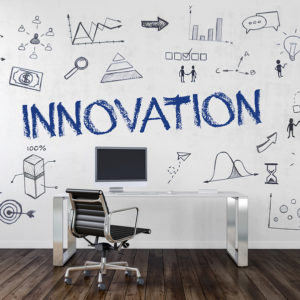COVID-19 has transformed the landscape in which organizations and individuals operate. Within days of the first outbreak, almost every aspect of our lives changed, including how we work, attend school, shop, access healthcare, and socialize.
Fortunately, digital versions of all these activities existed before the pandemic, resulting in quick adoption, and are likely to persist long after the pandemic is over.
Working from home provides a striking and quantifiable example. Before the pandemic, 27 percent of office workers reported working from home three days a week or more, and 58 percent say they will continue doing so even after the pandemic is over, a jump that would have taken 10 years or more at the pre-pandemic rate of growth.
Likewise, telemedicine is here to stay. For example, just 0.1 percent of primary care visits covered by traditional Medicare were done via telehealth in February; by April, it was 43.5 percent, more than a 400-fold increase. Similar step functions in digital adoption have occurred in education, retail, and entertainment.
The enhanced globalization due to a rapid digitization, catalyzed by the pandemic, means that firms not only must pay attention to competitors within their own industry (domestic and global) but also to other industries that they can learn from (established and startups).
For example, lean principles, focused on elimination of non-value-add or wasteful activities, pioneered by Toyota Motor Corporation, are increasingly being used in healthcare, apparel manufacturing, and even food banks to enhance productivity
Successful organizations will be those that view these transformations as an opportunity, and aggressively innovate to adapt to a decade worth of change over the next few months. We highlight three key focus areas:
First is re-evaluation/re-invention of business models. Our new normal has made pre-pandemic ways of conducting business obsolete. Expecting things to go back to “the way it was” is a recipe for irrelevance. Instead, reimagine what your customers’ lives will be in a hyper-connected world, and what you can do to improve them.
For example, the overnight move to online instruction has forced higher education to rethink curriculum. Is it engaging, relevant, and capable of producing employable graduates? Should universities (re)consider partnerships with local firms and other educational institutions? Importantly, how best to utilize digital platforms to add value?
And the pandemic has highlighted the risks inherent in overly efficient supply chains, forcing executives to rethink the supply-chain design and the importance of building resiliency (e.g., backup/onshore suppliers, larger safety stocks).
Government regulation can play a key role in making many of these innovations a reality, for example by creating fair taxation strategies for online purchases and reimbursement for telehealth services.
Organizations need to understand how post-pandemic life will be different for consumers and employees and adapt their business models to these evolving needs — while recognizing that new virtual approaches will make it harder to personally connect.
The second imperative is, thus, to find innovative ways of engagement. This includes timely/transparent two-way communication, offering continuing education credits and development opportunities to employees, and personalized messaging and visual engagement tools for customers, noting that digital shift has made it easier to implement aforementioned strategies.
However, all these efforts will be for naught, if customers don’t have the requisite trust or if their core needs are violated. Do customers feel psychologically and financially safe? Do employees feel they are being treated/evaluated fairly? Can leadership come through when problems arise?
Thus, the third need is to focus on measuring, monitoring, and building trust. It will be critical for firms to have a clear understanding of actions that enhance trust in consumers and confidence in their employees. Thus, firms need to employ rigorous methods to understand human behavior (e.g., service/product preferences for consumers or work-from-home preferences for employees). The silver lining is that digital adoption and mobile use, accelerated by pandemic, has made elicitation of such preferences easier.
For organizations to succeed, they need a mindset as different as the post-pandemic world, and a commitment to creativity, testing and deep listening.
While the COVID-19 pandemic is a tragedy, out of that trauma will come innovative organizations that effectively leverage technology, serve customers better, and provide opportunity for employees.

